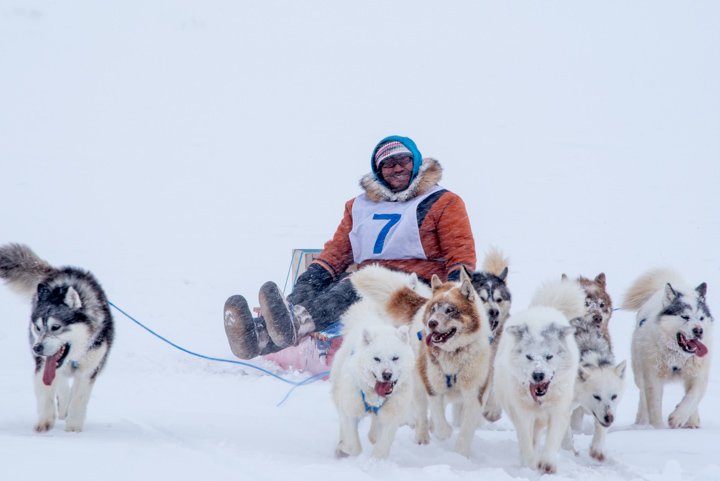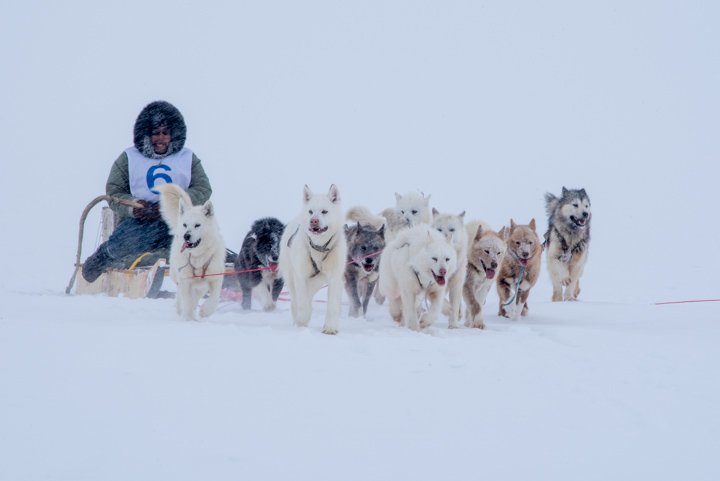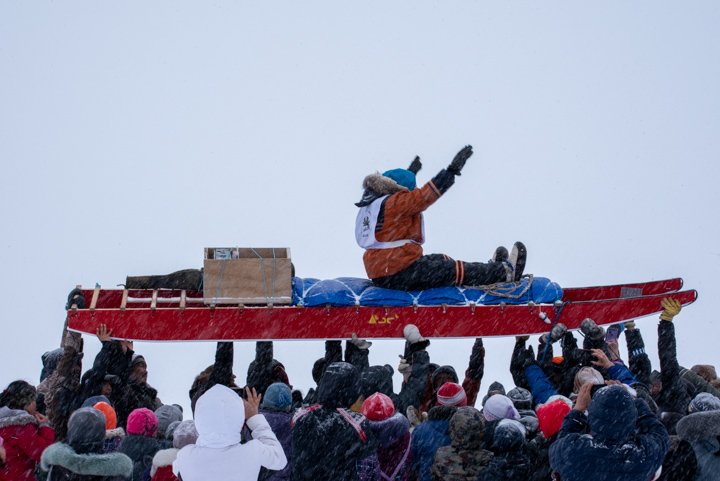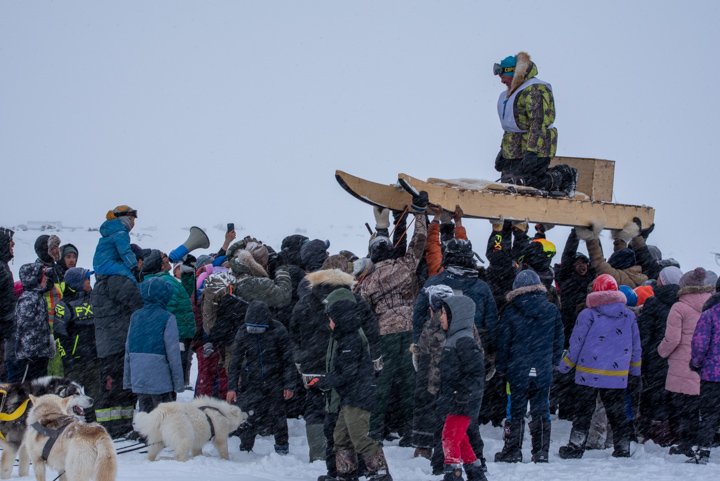
Nunavut Quest is a 500-kilometre dogsled race in north Baffin Island that takes place each spring. The two years of Covid-19 restrictions ending is marked by the return of the territory favorite event. Nunavut quest began in Arctic Bay, Nunavut on April 18th and ended 550 km south in Igloolik, Nunavut on April 27th after blizzards, strong winds, and problematic dogs caused delays during the race.

Nunavut Quest shares little similarities with other sled dog races, featuring no set trail nor the usual support systems one would expect to see. There is no shelter on the land for the dog teams or the men, nor are there veterinarians close-by. Survival in this race is reliant on the symbiotic relationships Inuit and their teams have. The only form of communication race guides and timekeepers had to relay information to the outside world for the first decade of racing was a SSB radio in an orange tin box. Nowadays, Race coordinators and accompanying support crews are outfitted with GPS and SOS devices in the event of emergencies.

The Quest is also a unique journey for the mushers, support crew, and race coordinators. Not only does Nunavut Quest focus on the dog race itself, but the culture, heritage, and traditions of the Inuit are also celebrated throughout the 500-kilometre journey. It harkens back to a time when travelling by dog team was a way of life and a reminder of the courage, strength, patience, and determination of the Inuit who have thrived on this landscape for thousands of years.

The sled of the mushers is a traditional design, known as a 'Qamutiq.' Originally, it was made using bones, frozen fish and the skins of seals or walruses. Frozen fish were laid onto a walrus skin in a line, then rolled up to form the long runners of the Qamutiq. Bones or fish were then lashed to the top using rope made from the skins of Bearded Seals to create a deck or platform for a rider to sit on as well as hauling his goods. Thin layers of soil from the land would then be applied to the bottom of the runners and then iced over in layers with whatever fluids were available, from melted snow to blood and possibly urine. The combination of ice and sod would create a surface that can easily be replaced if worn and also of low friction. No nails are made to attach the slats to the runners, with rope and wood replacing sealskin and bones. The ropes allow the sleds to flex over the rough tundra terrain without popping nails and destroying the sled.

It wasn't clear until a few weeks before the event if Nunavut Quest would be able to proceed or if Covid-19 and related public health restrictions would put an end to festivities for a third year. But the participants and fans of Nunavut quest were grateful that thing had eased up enough to allow organizers to be given the go-ahead. The Quest will be an important way to bring families and friends together again after a few years of disruptions.
The winner of this year's race will receive $20,000, while second- and third-place finishers will receive $10,000 and $5,000, respectively. Everyone else who finishes will receive $1,000 for their hard work.

Find my artwork for sale exclusively on NFTShowroom.com
Find my photographs of Nunavut scenery and Wildlife on Lensy.io
Follow me on twitter here: Hive Related Account / Photography and Art Account
I am also on Instagram: But only Photography and Art
